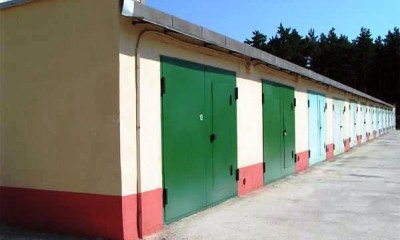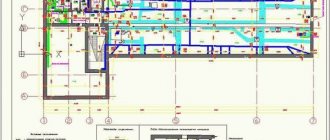Construction of a garage is work that in some cases requires obtaining a permit. The process of issuing such a permit is regulated by Article 51 of the Civil Code of the Russian Federation, as well as Federal Law No. 93 on dacha amnesty and articles of the Civil Code of the Russian Federation.
In some cases, the construction of such a building must be legalized by obtaining a permit. Read the article about cases when it is necessary to obtain a permit and information about which areas can be used to build a garage.
Where can you build?
You can build a garage, based on Article 51 of the Civil Code of the Russian Federation, in the following areas:

Allocated for individual housing construction (clause 17.1.1).- Not intended for business activities (clause 17.1);
- Defined on the basis of legislation in the field of horticulture and gardening as garden plots (clause 17.1).
- Belonging to a garage-construction cooperative. In this case, the garage is transferred into the ownership of the owner after full payment of the share contribution (Part 4 of Article 218 of the Civil Code of the Russian Federation).
In addition, permission is not required for the construction of non-permanent buildings, in other words, garages without a foundation and utilities (clause 17.2). However, it should be understood that such a structure will be extremely unstable and the risk of its destruction is extremely high.
Installation of garages near apartment buildings on territory that is not private property is considered as self-building. But this does not mean that the construction of such a building cannot be legalized. Such a procedure is possible, but it requires a lot of time and effort.
Legalize an unauthorized garage - “self-construction”
In the case where a garage box was built in the courtyard of a multi-storey building without the necessary registration, that is, without permission, then a number of certain problems may arise during registration.
Read more: Where to get a tax deduction when buying an apartment
First, it turns out that a specific plot of land is not intended for this type of building; the garage box may even be demolished.
Secondly, although the building itself belongs to the motorist, the land plot underneath most likely belongs to the city, which promises a number of specific problems. But the legislation takes into account the specifics of such buildings, and it is possible to legalize a garage built in Soviet times and later, guided by Article 222 of the Civil Code of the Russian Federation.

How to register ownership of an unauthorized garage? If the owner of the box does not have the required documents in his hands, they will have to be prepared, and retroactively. And there are a lot of them - acts of the State Commission, required permits and other initial permitting documentation.
In order to legalize a garage built without permission, you will have to seek help from the government body dealing with these situations, namely the Commission for the Suppression of Unauthorized Construction. There you need to write an application asking to preserve the unauthorized garage.
If the answer is positive (most likely), with the permission received, it is already possible to process all other permitting documentation.
Later, with this paper, you will be able to defend your rights through the court, because it will serve as direct confirmation of the citizen’s attempts to resolve the issue administratively.
Requirements
Let's consider the standards and requirements for fire, sanitary and construction safety:
To a separate object on a plot for individual housing construction or garden plot
As for the norms that must be observed when constructing such a facility on a site for individual housing construction, these are the norms of SNiP 2.07.01-89, which regulate the rules for the construction of buildings for utility purposes (this includes a detached garage):

The distance to buildings on the adjacent site should be:- 10 meters for reinforced concrete products;
- 8 – for concrete;
- 10 meters - in the case when one of the buildings is made of flammable materials, including wood;
- 15 – if the obi is built from such materials.
- If the partitions in the structure are made of wood, then the permissible distance must be increased by 2 meters;
- The distance to the fence between areas must be at least 1 meter;
- If there is a side passage near the site, then it is necessary to retreat from it at least 3 m;
- The distance from the central road must be at least 5 meters;
- If the garage is being built as a detached one, then there must be a distance of at least 3 meters from it to the residential building;
- In addition, when opened, the garage door should not block the movement of vehicles and pedestrians, and a car parked under a canopy should not block traffic on the road.
It’s better to add another half meter to these distances so that no questions arise.
If construction has not yet begun on the neighboring site, you can only comply with the norm for the distance to the fence . In this case, when constructing structures, the owner of the neighboring plot must take into account the distances specified in these SNiPs.
Bypassing the distances of these building regulations is possible only with the written permission of the owners of the neighboring site.
Even if SNiPs are advisory in nature, however, if the owner of neighboring plots can prove that a structure that was erected in circumvention of these norms infringes on their rights or causes a danger to their life and health in court, then the court will oblige the building to be moved in accordance with the requirements of these norms. And if the garage is a permanent structure, this is very problematic.
Red lines

In addition, when constructing a garage, or indeed any building on a private plot, it is necessary to build the building on the basis of established red lines - markings laid down in the master plan of the settlement.
This marking reflects the location of communications. Any building or structure must be located at a distance of at least 5 meters from these lines, otherwise the court may rule on the demolition of an object that violates this distance.
Fire regulations
In addition to the above standards, it is necessary to comply with fire safety requirements . This will not only secure the building, but also reduce the permissible distances to neighboring structures:
- There should be a fire shield and a fire extinguisher near the building;
- there should be no heating in the garage;
- the wiring goes through the in-house meter, is laid inside a metal sleeve and is made according to PTEEP;
- factory shades are installed on the light bulbs;
- fuses are installed.
Failure to comply with any of the above standards will affect the ability to locate the garage. We will have to carry out construction in accordance with SNiP.
In the basement or first floor of a residential building
When building a garage of such a layout, when it is located on the ground floor, there are also SNiP requirements:
- The upper part should protrude above the ground surface by at least 2 meters.
- The garage should go underground no more than half its height.
When constructing a structure on the ground floor, the requirements for the mandatory presence of a canopy must be observed in the case where the windows of the rooms are located above it.
General recommendations for both projects would be as follows:
- Sealing of ceilings and walls to prevent the penetration of exhaust gases into residential premises.
- Duct ventilation device.
- The use of non-combustible materials in the construction of walls and ceilings.
Otherwise, the safety requirements must be those of a detached garage.
In GSK

By becoming a member of the GSK, you can also start building a garage, a permit for which is issued by the cooperative itself.
However, in this case, it is worth understanding that the land on which GSK has developed its activities can be leased and owned by the municipality . Then there are risks of losing a capital asset in the event of termination of the lease.
In addition, ownership of the premises remains with the cooperative until the full payment of share contributions by its member. If you plan to build a detached garage on territory owned by GSK, it is better to apply for permission from the municipality. This will avoid problems with registering ownership of the structure after payment of share contributions.
In most cases, a garage built on cooperative land is made in the form of boxes with adjacent walls to other garages. In this case, the garage is not considered a building, but a room in a building - a number of adjacent boxes.
When constructing such a structure, it is also necessary to be guided by fire safety requirements , but otherwise, strict requirements for the project do not apply.
A detached garage on the territory of the GSK is an extremely rare phenomenon and is subject to the same requirements as for auxiliary buildings for utility purposes.
Required documents
To build a garage on the territory of an individual housing construction, regardless of its type, a building permit is not required. A construction permit on the territory of the GSK is issued by an authorized person of the cooperative and the list of documents is regulated in accordance with the charter.
In the case where the garage is intended to be used for business activities or the garage is located outside the territory for individual housing construction or civil construction, a permit will be required.
To do this, the following package of documents is required:

a document confirming ownership of the plot;- owner's statement;
- passport and a copy of the owner’s passport;
- technical plan of the site from BTI;
- construction project;
- cadastral map;
- utility network connection plan (if necessary);
- topographic map.
The list of the above documents is submitted to the architecture department and within a month permission to carry out construction work or a written refusal indicating the reasons will be given.
Methods of legalization
Even if you don’t have documents, you can try to register a garage using one of the following methods:
- Apply the provisions of the “dacha amnesty”.
In accordance with Federal Law No. 93, citizens using illegal buildings or land plots are given the opportunity to register these objects according to a simplified scheme.
- Resolve the issue in court.
If local government officials do not agree to legalize the building in accordance with the provisions of the law, then this can be achieved through the courts. To legalize self-construction in court you will need:
- obtain the consent of neighbors;
- prove that the object is located on lands that already belong to the plaintiff;
- Confirm that the building complies with all sanitary and technical requirements.
Read more: How to check documents for a plot before purchasing
If these points are true, then you can safely go to court.
- Contact your local Department of Architecture office.
If the garage does not pose a danger to those who will be nearby, and its location is not associated with a violation of anyone’s rights, then officials may agree to legalize such a building. As a result, the owner receives all the necessary documents for construction, with which registration of ownership of the garage will not be difficult.
The implementation of each of these methods is possible only under the condition that the garage is located on land that the citizen uses legally (is the owner or has received it for temporary use from the municipality).
Refusal to issue
Circumstances in connection with which the architecture department may refuse to issue a permit:
- An incomplete list of documents has been provided.
- There is no confirmation of ownership of the site.
- The purpose of the site does not provide for capital construction.
- The garage design does not comply with fire safety requirements.
- The location of the garage does not comply with SNiPs.
- Installing a garage will prevent free passage.
If the reasons for refusal are eliminated, you can resubmit your application. If there are no grounds for a refusal, but the architectural department still does not give permission, then its actions must be challenged in court.
Papers for obtaining ownership of a garage

After construction is completed, it is necessary to take care of the ownership rights to the structure.
It is also necessary to register those buildings for which construction permits are not required . This will confirm the fact of ownership of real estate, and therefore allow them to dispose of it in full.
Depending on the type of garage, you will need to select a certain package of documents to register the building and ownership of it.
You can submit documents:
- personally;
- through a representative (then you will need documents confirming his authority);
- by mail;
- through MFC.
The results are obtained using the same methods.
To a separate building, on your own land
If a detached garage was built on land allocated for individual housing construction or other non-commercial use and does not violate the purposes for which the site was allocated, then it will require a very small package of documents:
- Certificate of title to a land plot.
- Garage declaration in two copies.
- Owner's passport.
- Technical plan prepared by a cadastral engineer.
- Extract from the Unified State Register of Legal Entities (if ownership is registered in the name of a legal entity).
- Receipt for payment of state duty.
According to Art. 333.33 of the Tax Code of the Russian Federation, the state duty for such registration will be 2 thousand rubles for individuals and 22 thousand for legal entities.
On the ground or first floor of a private house
If the garage was built as part of a house, then additional registration of ownership of such a structure is not required. It is considered a room in a house, the ownership of which will have to be registered one way or another.
In a garage-building cooperative
To register ownership of a garage located in GSK, you will need much more documents:

Application for state cadastral registration of real estate and (or) state registration of rights to real estate.- The applicant's passport or other identification document.
- Extract from the Unified State Register of Legal Entities (if ownership is registered in the name of a legal entity).
- Receipt for payment of state duty.
- A certificate of full payment of share contributions, which is signed by the chief accountant of the cooperative and an authorized person.
- A document that confirms the right to pension savings.
- Constituent documents of the cooperative, including all changes and additions.
- A document confirming the authority of the person who signed the certificate (we are talking about an authorized person, and not about the chief accountant of the cooperative).
- A document confirming GSK's ownership of the land.
- Permission to put into operation a facility built after December 30, 2004 or an acceptance certificate for a facility built before this date.
In addition, you will need to obtain a technical passport and a certificate of registration of ownership of the site. Otherwise, the structure will be considered an unauthorized construction and it will be impossible to register ownership of it.
All certificates are provided in two copies. Payment of the state duty will be the same as when registering ownership of a structure built on the territory of individual housing construction - 2 thousand for individuals, 22 thousand for legal entities.
How does registration of property take place?
In many cases, it takes much longer to design a garage than to build it. Although the general procedure is quite simple.
Read more: Place of concluding a contract for the purchase and sale of a car
Where to begin
- First of all, a citizen needs to contact the appropriate authorities with a statement that he has an illegal building.
- Afterwards he will be provided with a certificate stating that the building really exists.
- Next, he proceeds to fill out a declaration for unauthorized construction.
- If the decision on the possibility of transferring the garage to private ownership is positive, then with the available documents you should go to Rosreestr and register the ownership of the garage there.
Documentation
In order for the situation to be resolved in favor of the applicant, he will need to present a number of documents:
- a completed and signed declaration for unauthorized construction (the form is provided by the Department of Architecture or Rosreestr);
- documents indicating that the area under the garage is used legally (papers confirming ownership, or a rental agreement along with a standard building plan);
- cadastral plan (with changes made to it after the construction of the garage);
- a statement signed by all neighbors indicating that they have no complaints.
Getting permission
If the owner of the garage does not want to contact the Commission, then you can try to get permission to erect a building:
- Order from the BTI or the Department of Architecture a construction project that is absolutely identical to the existing garage (any redevelopment during this period is unacceptable);
- Take care of obtaining a paper permitting construction;
- Wait some time and apply for the building to be put into use.
After this, all that remains is to make changes to the cadastral passport and register ownership. An extension over a garage can be legalized in the same way.
What is the price
Among the main expenses when legalizing a garage are:
- replacement of a cadastral passport – 1–1.5 thousand rubles ;
- payment of state duties – 0.5–2 thousand rubles ;
- procedure for registering ownership rights – 1 thousand rubles .
If the issue is resolved through court, then a number of additional costs will also be added to this list.
According to the dacha amnesty
From January 2020, lands and buildings on them can be privatized in a simplified manner in accordance with the law “On Dacha Amnesty”.
The use of the law is relevant in cases where:
- the lands were provided by the authorities before the end of October 2001 or inherited from persons to whom they were also allocated by the state within the specified time frame;
- the territory being registered is included in one of the permitted categories (individual housing construction, private household plots, SNT).
With this registration option, the applicant will need a standard package of documents (declaration, land papers).








